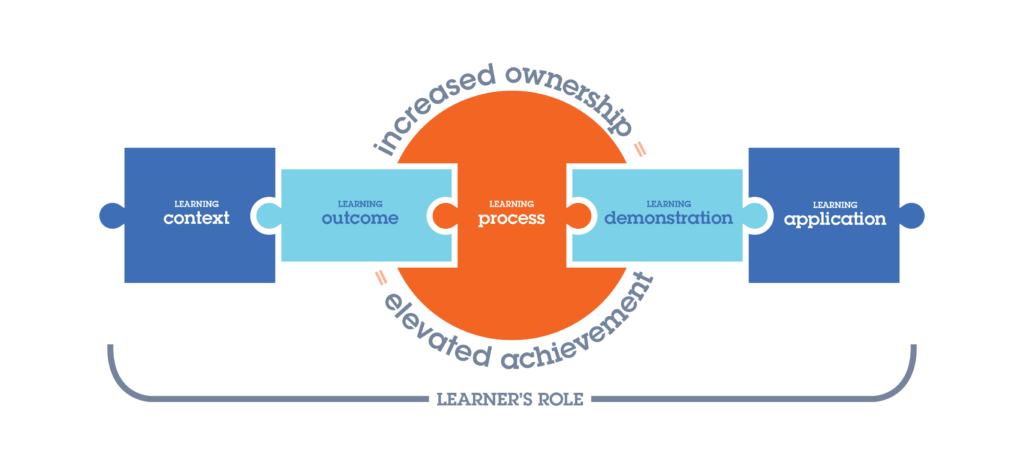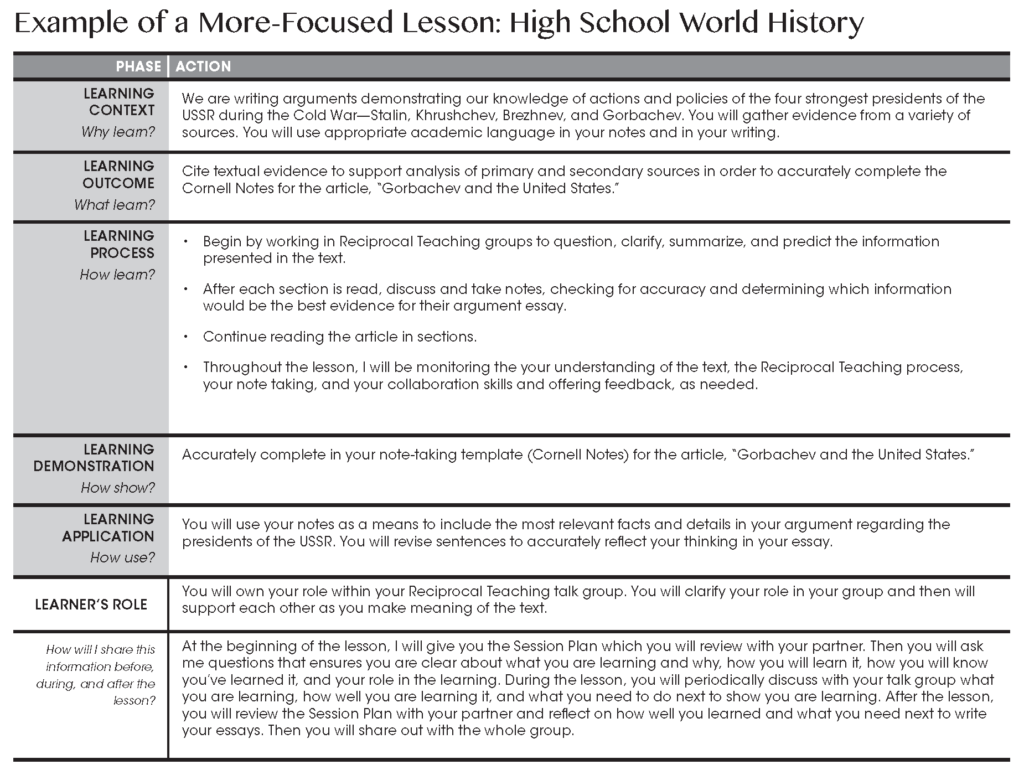Share this article.
As educators, we know that learning is much more than a teacher’s delivery method or a student’s completion of an assignment. It also involves each student’s understanding of what they have learned, how they have learned it, and what they have learned about their own learning. This is the metacognitive side of learning that will build students’ motivation, push them to higher academic growth, and develop their ownership of their own learning. This is the approach that elevates learning to learner ownership, or learnership.
Someone who has true learnership is one who self-directs, self-evaluates, self-reflects, and self-controls their own learning. And these self-driven attributes drive students’ motivation to learn. Don’t all students deserve the opportunity to become more motivated?
Yes.
To be truly motivated in learning, students need to know and be able to articulate the following each and every day…
- Why am I learning this?
I am learning this because… - What am I learning?
I am learning… - How am I learning this?
I am learning this by… - How am I showing I am learning it?
I am showing I am learning it when… - How am I using this learning later?
I am going to use this later because… - What is my role in the learning?
My role is…
And if we, as educators, are going to build this motivation and learnership, we need to know where our students are in the Mastery Sequence and then plan instruction that clearly answers these questions every day and in every lesson. You can begin by utilizing a focused Learning Model that will support your decision-making. A focused Learning Model is the most effective device you can use to focus your lessons, thereby supporting your students to develop learnership. Here’s how…
A Focused Learning Model
The Learning Model is made up of five student-centered phases: setting the Learning Context, stating the Learning Outcome, engaging in the Learning Process, producing the Learning Demonstration, and implementing the Learning Application.
The Learning Model supports lesson planning that develops learnership by ensuring teachers answer the following questions:
- Why is the learning important? The Learning Context makes connections to the real world and to the final prompt of the unit.
- What will my students learn? The Learning Outcome uses the standards to develop the outcome of the lesson (what students will learn) and the demonstration of their learning (how students will show mastery).
- How will my students learn it? The Learning Process determines which instructional strategy or methodology will most effectively and efficiently teach your current students the outcome of the lesson.
- How will my students show that they have learned it? The Learning Demonstration determines how students will show mastery of the outcome of the lesson.
- How will my students continue to use what they learned? The Learning Application makes connections to how students will use today’s learning to produce a stronger final product and how they will use this learning in other classes and situations.
- What is the student’s role in the learning? Answering these questions during planning and then sharing this information with the students will clarify for them their role in the learning.
If a teacher plans with this thinking in mind, the lesson is more effective in terms of motivating and more efficient in terms of time. This is because the lesson is more easily explained to students who then have an easier time getting started, monitoring their understanding during the lesson, and successfully completing a product that demonstrates their learning.
Here is an example of what we mean.
Click here to download more examples of focused lessons.
Learnership—What the Teacher Needs to Share and the Student Needs to Articulate
This clarity of decision-making will help your students understand their role in their own learning. That is if you let them in on your decision-making.
In other words, utilizing the Learning Model will not truly elevate your students’ achievement if they don’t know what they are learning, why they are learning it, how they are learning it, how they will know they have learned it, and how they will continue using their learning. That’s why teachers who are developing student ownership will always plan to share their thinking. This is how we model the skill of learnership
So, determine how you want to communicate these decisions to your students before, during, and after each and every lesson by always answering the question:
- How will I share this information with my students before, during, and after the lesson?
Sharing this information with your students will help them answer the question, “What is my role in the learning?”
Create routines that allow you to reflect regularly with your students on your decisions. Don’t keep them in the dark—let them understand and interact with your decisions. You’ve thoughtfully made them so let your kids in on the secret to success. In doing so, you’ll be intentionally delegating to them the responsibility of their learning which, as you know, increases learnership.
In turn, students who are supported by teachers who share their thinking and model the skill of ownership can more readily articulate their answers the following questions:
- Why am I learning this?
I am learning this because… - What am I learning?
I am learning… - How am I learning this?
I am learning this by… - How am I showing I am learning it?
I am showing I am learning it when… - How am I using this learning later?
I am going to use this later because… - What is my role in the learning?
My role is…
This type of articulation is confirmation that your students are owning their learning.
What’s Next in Learnership?
When we own something, it’s ours. It belongs to us. No one else can ever take it away. Isn’t that what we want our children to feel about their learning? Yes, it is.
But it is much more than a feeling. Learnership is also the life skill our children need to be successful in the future. In other words, success in the future is not about what we know, but rather, what we can do with what we know. This is exactly what colleges and employers are looking for.
We at Elevated Achievement believe that learnership is the most important thing we can help our students develop. That’s why we do what we do.
And, that’s why we wrote this article as a part of a series to provide you with the knowledge and tools you need to implement a focused Learning Model for each and every lesson. Delve deeper into how to utilize a focused Learning Model by checking out the other articles in this series…
- “How to Plan Lessons that Motivate Students Each and Every Day”
- “How to Set Out for Your Students Why This Learning Is Important”
- “How to Support Your Students to Know What They Are Learning”
- “How to Engage Your Students in the Learning Process”
- “How to Empower Your Students to Demonstrate Their Learning”
- “How to Ensure Your Students Apply What They Have Learned”
…Because when you do, you will be building your learnership to provide your students with opportunities to develop their learnership and elevate their achievement each and every day.
Continue the Learning
Check out these articles and resources to continue your learning about this topic…
The Learning Brief
In this article you learned…
- The metacognitive side of learning builds students’ motivation, pushes them to higher academic growth, and develops their ownership of their own learning.
- That to build motivation and learnership, teachers need to plan instruction using a focused Learning Model every day and in every lesson.
- Teachers utilizing a Learning Model will be supporting their students in knowing what they are learning, why they are learning it, how they will learn it, how they will show they have learned it, how they will continue to use what they learned, and what their role is in the learning.
Can you imagine building an environment full of motivated, engaged, and eager students who own their learning?
We can.



